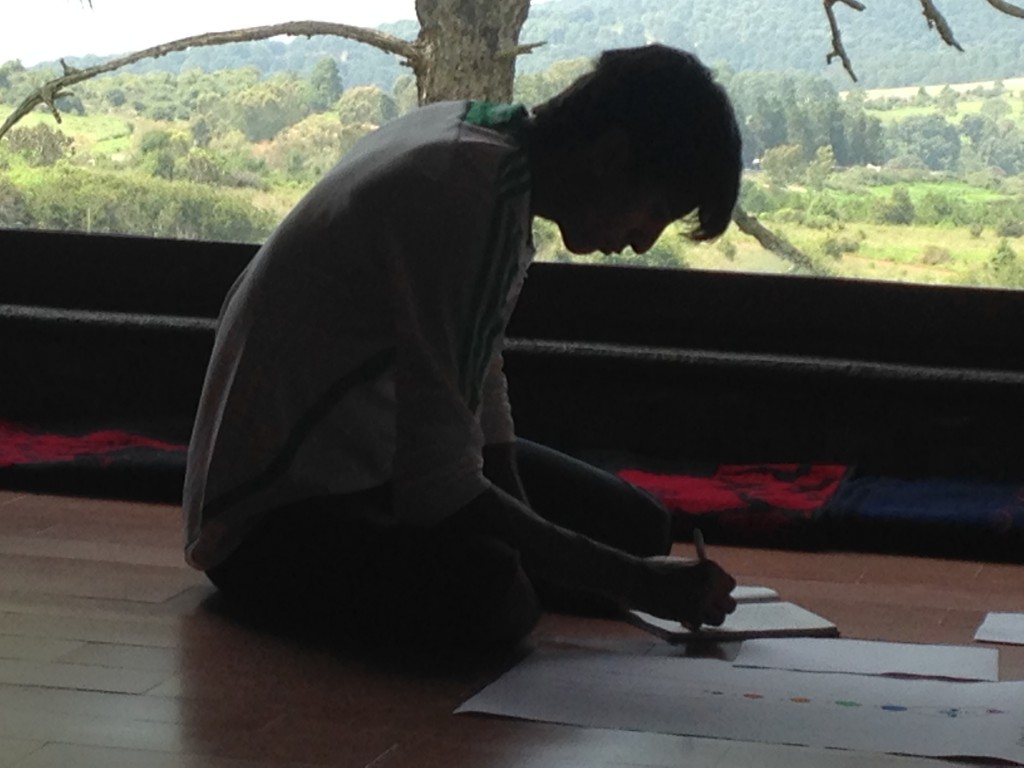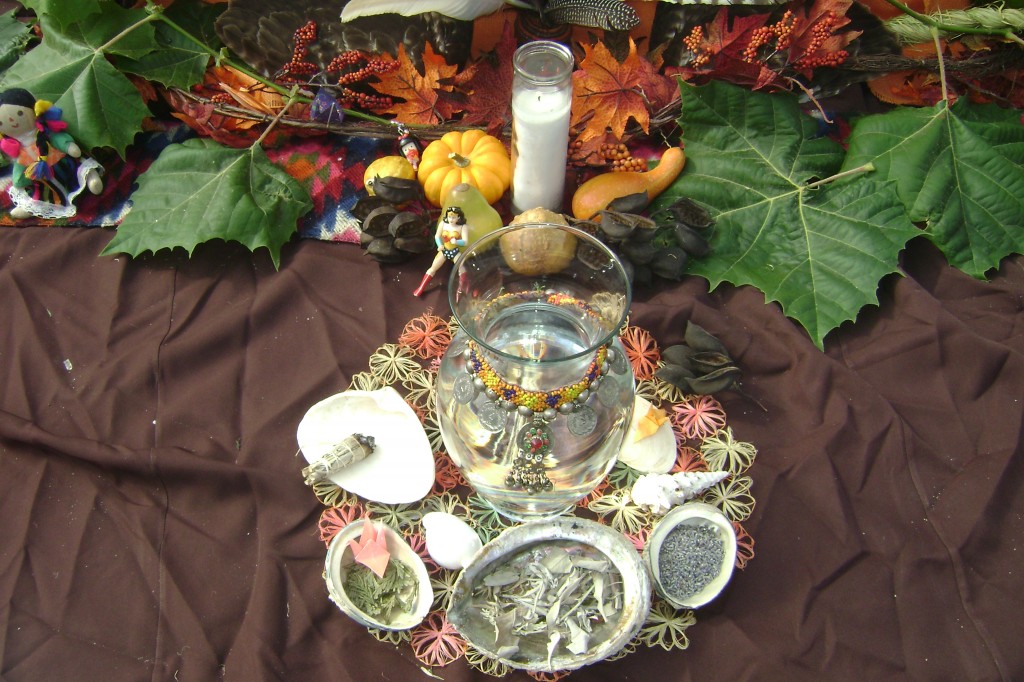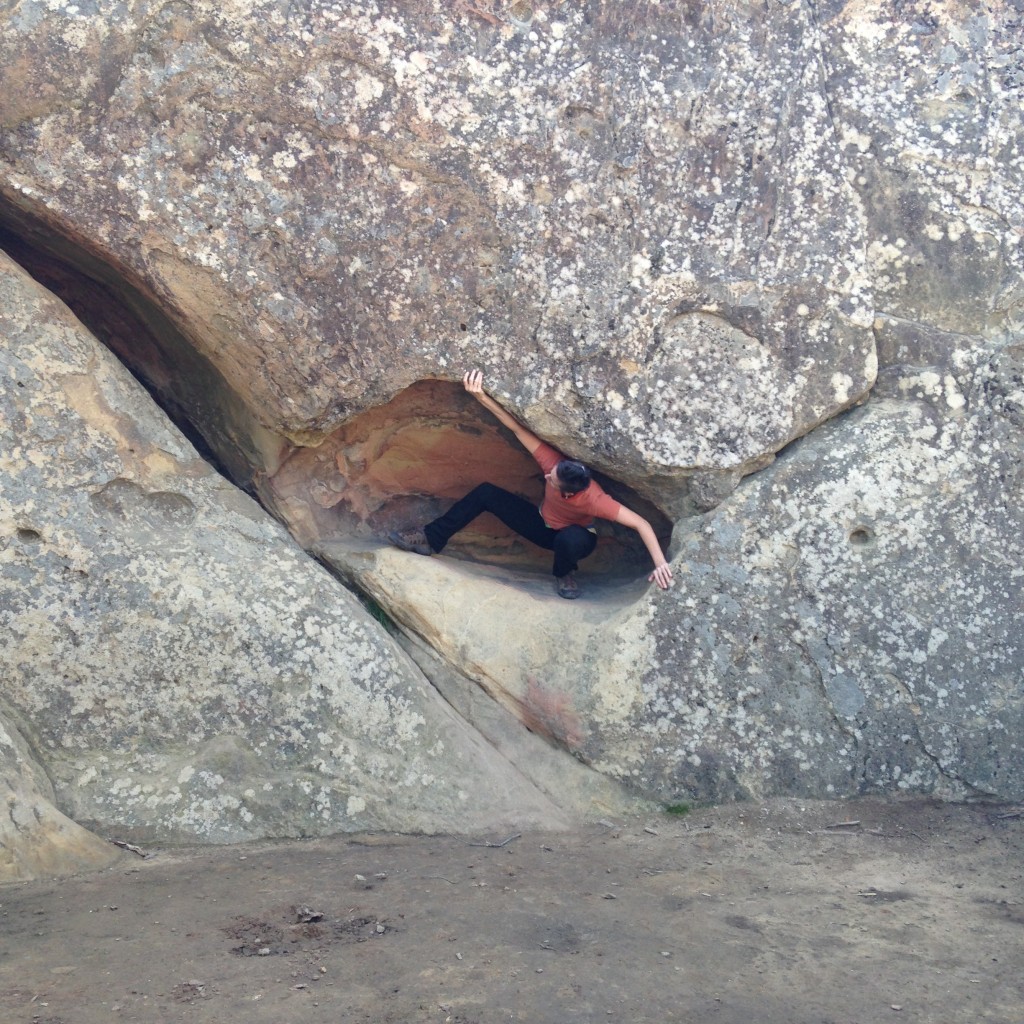 The minute we enter the body, we enter nature. There is no separation between us. The body is made up of 60-90% water, (90% water as babies… and 60% water in old age), the lungs breathe air into our movements, the bones contain calcium, iron and other minerals of the earth, and the energy that keeps our heart beating life into every cell, that generates movement itself, is a form of electricity or…fire. The sacred elements of the earth live in the body and their qualities can be felt, expressed and cultivated in solo, duet, or group exploration.
The minute we enter the body, we enter nature. There is no separation between us. The body is made up of 60-90% water, (90% water as babies… and 60% water in old age), the lungs breathe air into our movements, the bones contain calcium, iron and other minerals of the earth, and the energy that keeps our heart beating life into every cell, that generates movement itself, is a form of electricity or…fire. The sacred elements of the earth live in the body and their qualities can be felt, expressed and cultivated in solo, duet, or group exploration.
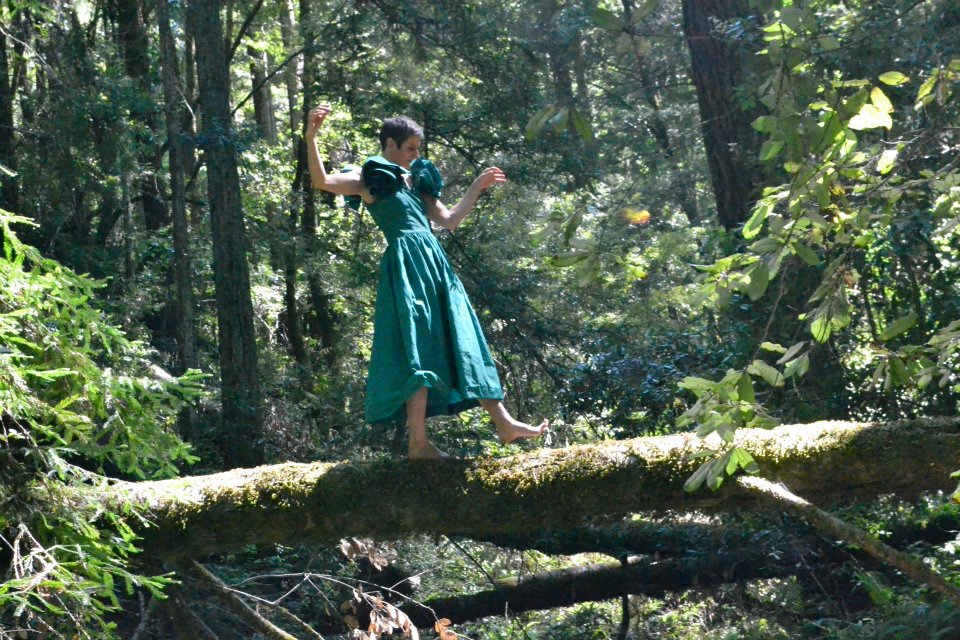 I live on a 3-lane street 2 blocks away from the 580 Fwy in Oakland, Ca., which takes its toll on my organs, senses and psyche, but when I step into the wild landscape of my body through dance, with the same open and porous curiosity as I do when I “escape” to nature, I am cultivating a type of eco-somatic integration to support my resilience to modern industrialism and its effects on urban society. Moving consciously with elemental forces and other nature archetypes in mind deepens my intimacy with the earth itself and it meets my need for a “larger than self” approach to hold the content of my life and my art. I wrote that before EcoSomatics became trademarked and comodified and as a somatic practitioner committed to a care economy with a decolonial and anti-captialist lense, I don’ t intend on claiming the term or methods as my own. If I own anything at all, it is probably limited to my own body and the spirit that lives within it. “Shlies dina augen den wies du was ist dir gehort”- my very broken german saying I learned from Norbert from the Boden See … it translates to: Close your eyes and you will know what is yours. Here is a better version: Schließ die Augen, und du wirst wissen, was dir gehört.
I live on a 3-lane street 2 blocks away from the 580 Fwy in Oakland, Ca., which takes its toll on my organs, senses and psyche, but when I step into the wild landscape of my body through dance, with the same open and porous curiosity as I do when I “escape” to nature, I am cultivating a type of eco-somatic integration to support my resilience to modern industrialism and its effects on urban society. Moving consciously with elemental forces and other nature archetypes in mind deepens my intimacy with the earth itself and it meets my need for a “larger than self” approach to hold the content of my life and my art. I wrote that before EcoSomatics became trademarked and comodified and as a somatic practitioner committed to a care economy with a decolonial and anti-captialist lense, I don’ t intend on claiming the term or methods as my own. If I own anything at all, it is probably limited to my own body and the spirit that lives within it. “Shlies dina augen den wies du was ist dir gehort”- my very broken german saying I learned from Norbert from the Boden See … it translates to: Close your eyes and you will know what is yours. Here is a better version: Schließ die Augen, und du wirst wissen, was dir gehört.
 Water, Earth, Air and Fire are considered “sacred” among indigenous peoples of Turtle Island because they stand apart from the things that we create and they cannot (or ‘should not’) be bought or sold. According to natural law: What we are made of, belongs to us. This shines a light on the subject of ownership and forces us to look at the multi-dimensionality of how we are situated in our lives from a decolonial perspective. As a response to the world we live in, and the body I was given, I am claiming that it is a birth right to have access to our body and its wisdom, just as it is a birth right to have access to the earth’s natural resources. Many of us have devoted our lives to reclaim or fight for these rights through the arts, therapeutic or spiritual practices, education, landback activism and environmental law. Dance as an artform, for the human animal is an embodied way to enliven these rights– to know the body and nature with ever-depening layers of awareness.
Water, Earth, Air and Fire are considered “sacred” among indigenous peoples of Turtle Island because they stand apart from the things that we create and they cannot (or ‘should not’) be bought or sold. According to natural law: What we are made of, belongs to us. This shines a light on the subject of ownership and forces us to look at the multi-dimensionality of how we are situated in our lives from a decolonial perspective. As a response to the world we live in, and the body I was given, I am claiming that it is a birth right to have access to our body and its wisdom, just as it is a birth right to have access to the earth’s natural resources. Many of us have devoted our lives to reclaim or fight for these rights through the arts, therapeutic or spiritual practices, education, landback activism and environmental law. Dance as an artform, for the human animal is an embodied way to enliven these rights– to know the body and nature with ever-depening layers of awareness.
The exploration of dance is formed by ones identity, spiritual values, upbringing, traumas, privilages and lack thereof, while navigating an overarching environmental crisis produced and intensified by the hardscape of white-capitalist-heterosexual-patriarchy. The intersecting forces of race, gender, class, sexuality, citizenship, religion, disability, imperialism, militarism and colonization show up not only in the world around us, but in the tissues, impulses, and resistances of the dancing body itself. The wounds of human beings and the wounds of the earth are inseparable—and Eco-Somatics is not a refuge from politics, but a way of engaging them through embodied practice.
The earth knows how to heal and sustain herself, yet humans continually disrupt this process by extracting and commodifying her resources. This harm emerges from a society shaped by capitalism— a system that not only positions the earth as property to be owned, but also trains us to see our own bodies as objects to be disciplined, exploited, or ignored. Although the natural environment deeply nourishes my work, I try not to imagine it as a place to escape to. Instead, I return to the rich terrain of the body as a way of reclaiming the inherent knowledge and resources that we have access to internally. As plastic is becoming part of our DNA, and the mechanisms of war are both heating up the planet and injuring the individual and collective soul, how do we create a wildlife sanctuary within our bodies? Who do we our political activism and our communities? My intention as a somatic practitioner, is to bring attention to that still exist within the body, untamed, wild and part of the anatomy of a liberation movement.
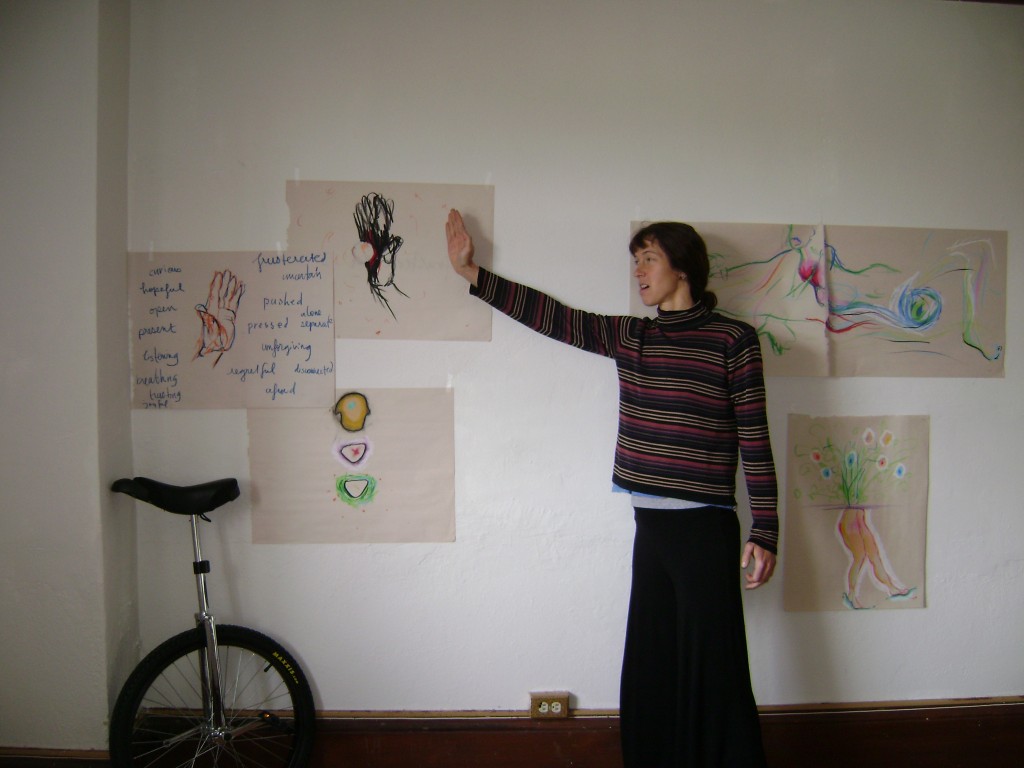 In the Tamalpa Life-Art Process and other body-centered therapies, we work to identify and confront what habits are interfering with our natural ability to move, play, relate, breathe freely, sense, express, or use our creativity. Taking an eco-somatic approach to our healing can offer alchemical support and perspective to our lives if we are able to understand how we are organized as individuals. The truth is, that we are all in crisis within the context of the environment at this time, and the symptoms are touching us all in many ways consciously and unconsciously on cultural, physical, psychological, social and economic levels…
In the Tamalpa Life-Art Process and other body-centered therapies, we work to identify and confront what habits are interfering with our natural ability to move, play, relate, breathe freely, sense, express, or use our creativity. Taking an eco-somatic approach to our healing can offer alchemical support and perspective to our lives if we are able to understand how we are organized as individuals. The truth is, that we are all in crisis within the context of the environment at this time, and the symptoms are touching us all in many ways consciously and unconsciously on cultural, physical, psychological, social and economic levels…
 Within a group process or individual counseling, we have an opportunity to engage in a process of understanding how we are situated in our relationship to body, nature, and eachother. We adopt a new group of people and the facilitator as our comrads, our allies and community and we create a sacred space to explore who we are now and who we want to become mentally, physically, or emotionally. Allow the wild terrain with its beauty, strangeness and emenseness to hold the content of your life. Consider this a vision quest as you drop into the truth of who you are un-encumbered by the burdens of work and every day life. The concept of temenos arose in classical Mediteranean cultures as an area reserved for worship of the gods. Some authors have used the term to apply to a sacred grove of trees, isolated from everyday living spaces, while other usage points to areas within ancient urban development that are parts of sanctuaries. Carl Gustav Jung applied this concept of Temenos to his work with expressive arts. Here, in this workshop, we can make a sacred place to create and play.
Within a group process or individual counseling, we have an opportunity to engage in a process of understanding how we are situated in our relationship to body, nature, and eachother. We adopt a new group of people and the facilitator as our comrads, our allies and community and we create a sacred space to explore who we are now and who we want to become mentally, physically, or emotionally. Allow the wild terrain with its beauty, strangeness and emenseness to hold the content of your life. Consider this a vision quest as you drop into the truth of who you are un-encumbered by the burdens of work and every day life. The concept of temenos arose in classical Mediteranean cultures as an area reserved for worship of the gods. Some authors have used the term to apply to a sacred grove of trees, isolated from everyday living spaces, while other usage points to areas within ancient urban development that are parts of sanctuaries. Carl Gustav Jung applied this concept of Temenos to his work with expressive arts. Here, in this workshop, we can make a sacred place to create and play.


